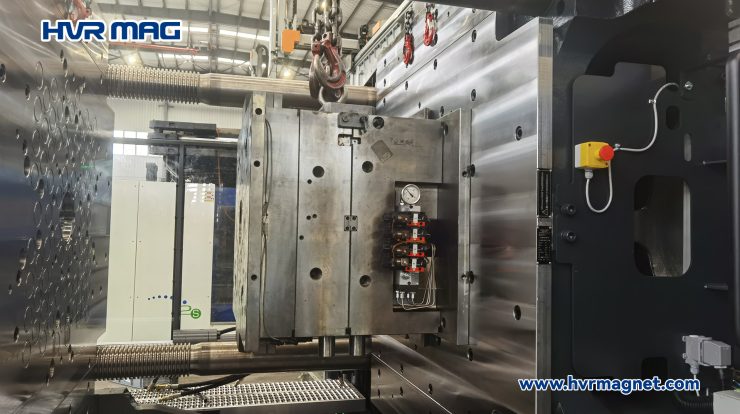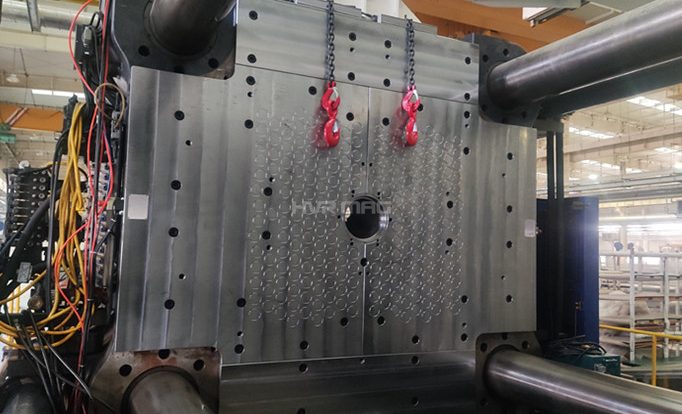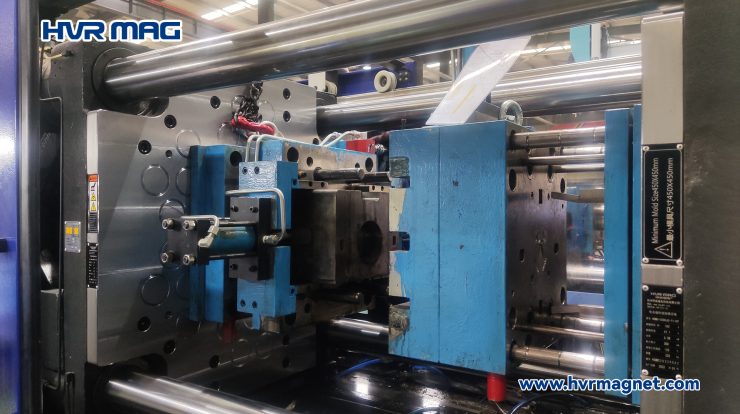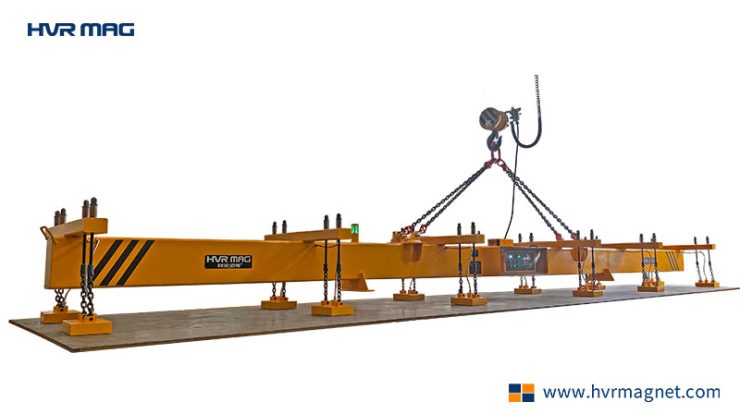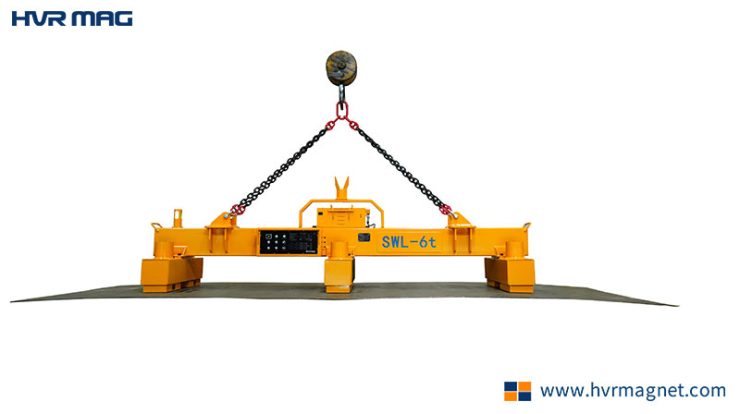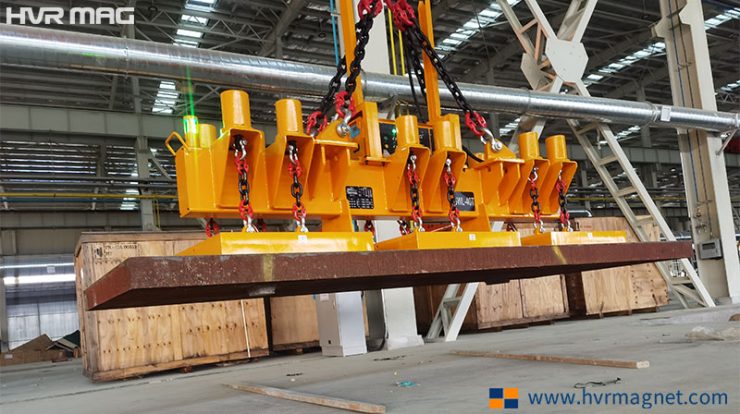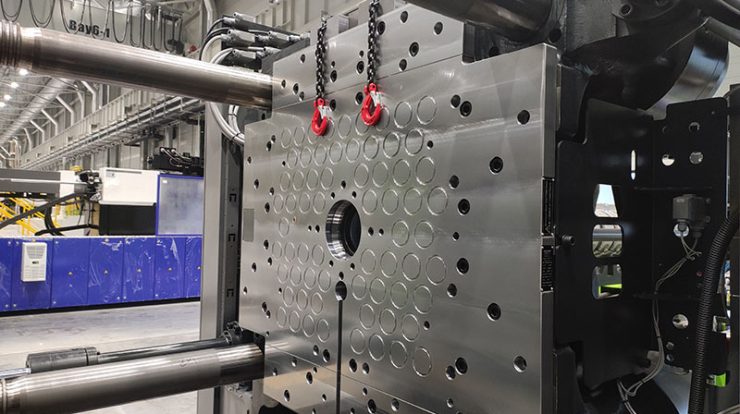
Quick mold change systems are mould clamping devices used on injection moulding machines. It can help you to fully increase equipment utilisation and productivity by shorten the mould changing process. There are 3 kinds of quick mold change systems: mechanical, hydraulic and magnetic clamping system.
Mechanical Quick Mold Change System
This is an earlier quick mold change system, no longer recommended.
Features: Mould back centre clamping for small to medium size injection moulding machines. Its mechanical structure is complex. And the clamping force is located in the centre of the back of the mould.
Advantages: The mould is completely open all the way round, without any clamping elements. Makes it easier to insert external pipework.
Weaknesses: The clamping mechanism is fixed to the back of the mould. There is no clamping force around the back of the mould and the forces are not uniform. As a result, the mould is deformed during operation. Also, the components in the clamping area are subject to severe wear. There is no status feedback between the clamping components and the mainframe and it is not intelligent. The system is difficult to install and maintain and is not suitable for retrofitting to existing equipment.
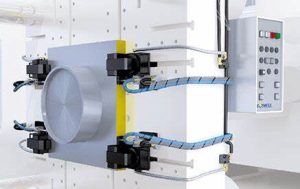
Hydraulic Quick Change System
Features: Using a pneumatic hydraulic pump unit to generate high oil pressure, the hydraulic oil enters the oil circuit connected to the clamping device and pushes the piston and lever mechanism of the clamping device to work to achieve rapid clamping of the mould, using the system to release the pressure and quickly release the clamping device to achieve rapid release of the mould.
Advantages: The pressure-holding system allows it to be used without affecting the clamping force during a power failure or a period of falling air pressure.
Weaknesses: The structure of the hydraulic mould changing system is also complex. It is not convenient for frequent mould changes beacause the clamping elements are around the mould. In addition, there is a risk of oil leakage from the pneumatic hydraulic pump, which is a real feedback from many customers.
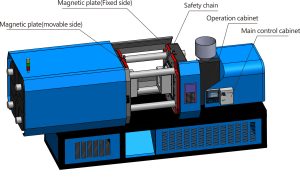
Magnetic Mold Clamping System
This is a rapid development in recent years, widely accepted and adopted by European and American countries, especially for the automotive industry. Some companies have also started to move away from traditional hydraulic mould changing systems to the development and sale of magnetic systems.
Features: Very simple structure and easy to control, without any mechanical clamping elements. With permanent magnetic clamping on all contact surfaces between the mould backing and the magnetic poles of the plate. For all forms and sizes of injection moulding machines.
Advantages: Easy to retrofit, suitable for various sizes of hydraulic and all-electric injection moulding machines. The clamping force comes from permanent magnetic material. No electricity is required during operation. The moulds are evenly stressed and less prone to deformation and wear. The clamping status has real-time signal feedback to the host, ensuring absolute safety of clamping. The accuracy and consistency of the moulded parts is good.
Weaknesses: The thickness of the magnetic template (usually 54 mm + 54 mm) may affects the opening stroke of the compact machine.
HVR MAG has more than 10 years of experience in the development and production of magnetic mould change systems. Our quick-change systems have several safety features to keep your moulds safely in place. For more information, please contact us at:export@hvrmagnet.com

